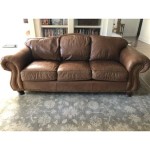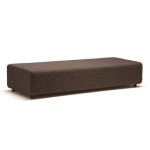Essential Aspects of Painting Old Leather Sofas
Transforming an old leather sofa through painting demands careful consideration of specific essential aspects, which if overlooked, may lead to unsatisfactory results. These aspects serve as the foundation for a successful painting project and encompass elements crucial for achieving a professional finish that rejuvenates the sofa and enhances its aesthetic appeal.
Surface Preparation: A critical step often overlooked, preparing the sofa's surface sets the stage for a flawless paint job. Cleaning the leather thoroughly, removing any dirt, oils, or debris, ensures proper adhesion of the paint. Sanding the surface lightly creates a slightly rough texture, providing a better grip for the paint, leading to a more durable finish.
Choosing the Right Paint: Selecting the appropriate paint type is essential for a successful painting project. Specific paints formulated for leather, such as leather paint or acrylic paint designed for leather, offer superior adhesion properties. These specialized paints withstand the flexibility of leather without cracking or peeling, ensuring lasting results.
Applying Multiple Thin Coats: Patience is key when applying paint to leather. Avoid the temptation to slather on thick coats, as this can lead to cracking and peeling. Instead, apply multiple thin, even coats, allowing each layer to dry thoroughly before applying the next. This meticulous approach ensures a smooth, uniform finish that adheres well to the leather.
Using Consistent Brush Strokes: Maintaining consistent brush strokes throughout the painting process is vital. Apply paint in long, even strokes, overlapping slightly on each pass. Avoid scrubbing or going over the same area repeatedly, as this can damage the leather's surface and compromise the paint's adhesion.
Allowing Adequate Drying Time: Allowing ample drying time between coats is crucial for a successful paint job. Rushing the process can lead to smudging or peeling of the paint. Follow the manufacturer's instructions for drying times, ensuring each layer is completely dry before applying the next. This patience will pay off in the long run, resulting in a durable, professional-looking finish.
Sealing the Paint: Once the final coat of paint has dried thoroughly, applying a protective sealant is essential. Leather sealants, available in matte or glossy finishes, create a protective barrier against wear, tear, and moisture. This additional step enhances the paint's durability and prevents premature fading or damage, ensuring the sofa's refreshed appearance lasts for years to come.
Painting an old leather sofa requires meticulous attention to these essential aspects. By following these guidelines, you can transform your sofa into a stylish and inviting piece that will add character and comfort to your home.

How To Chalk Paint A Leather Sofa Hallstrom Home

How To Chalk Paint A Leather Sofa Hallstrom Home

How To Painted Leather Couch Flip Diy All In One Paint Profit Chalk Vs

Painting My Leather Sofa Diy Makeover Scratch Doctor Paint
Woman Paints Old Leather Couch Orange To Save 600 Divides Opinion

How To Painted Leather Couch Flip Chalk Paint

How To Chalk Paint A Leather Sofa Hallstrom Home

Can You Really Paint Leather Furniture Yes Tanglewood Works

Using Chalk Paint To Your Couch Or Wing Back Chair Fabric Leather The Purple Painted Lady

Woman Reveals How She Transformed A Battered Leather Sofa Using Grey Paint The Sun








